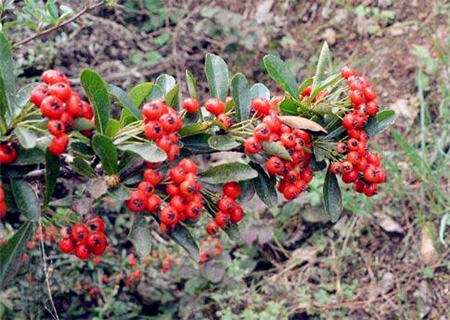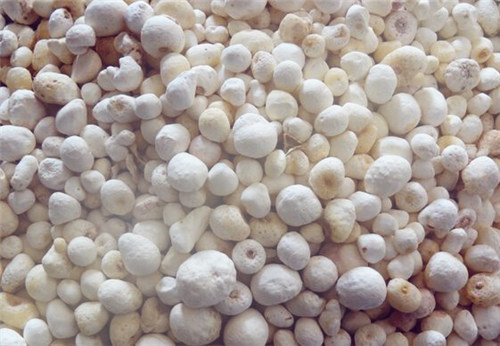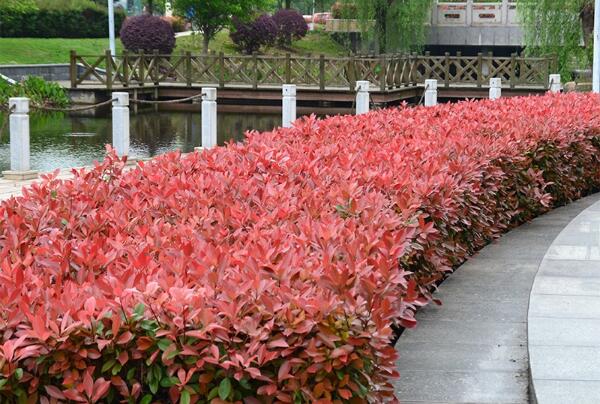How much is the price of rescue food "fire thorn fruit" per jin? What season is suitable for planting? When does it usually blossom?
Hippophae rhamnoides is also known as food for the rescue army and water canister. Rosaceae, evergreen shrub, is a medicinal, edible and ornamental multi-purpose flower and fruit plant, which looks at flowers in spring and fruit in winter. So how much is the price of Firethorn fruit per jin? What season is suitable for planting? When does it usually blossom?

How much is the price of thorn fruit per jin:
Depending on which area you need seabuckthorn fruit, there are * * seabuckthorn, Gansu seabuckthorn, Qinghai seabuckthorn, Inner Mongolia seabuckthorn and so on. * * Hippophae rhamnoides is more expensive, fresh fruit how to more than 30 jin of it, after drying the seabuckthorn fruit is basically within 100-120 yuan. Gansu Hippophae rhamnoides is very cheap, fresh fruit is only 2 yuan per jin, sun-drying is only 5-6 yuan per jin, but the effect is much worse. Qinghai seabuckthorn is generally refined seabuckthorn fruit oil and seabuckthorn seed oil, the refined seabuckthorn fruit is pure black, bright sticky. This kind is worthless, and it is also a few yuan per jin.
The above prices are all reference prices, and the actual prices are subject to specific circumstances.
Distribution range
Distributed in the south of the Yellow River and the vast southwest of China. All of them belong to 10 species and 7 species are produced in China. Many excellent cultivated varieties have been cultivated abroad. Produced in Shaanxi, Jiangsu, Zhejiang, Fujian, Hubei, Hunan, Guangxi, Sichuan, Yunnan, Guizhou and other provinces and regions.
The planting methods of Pyracantha are as follows:
1. Land selection: Hippophae rhamnoides belongs to tropical plants, like warm, sunny zone, Hippophae rhamnoides has strong cold tolerance, can still grow normally at-16 ℃, and survive the winter safely. Should choose the soil layer is deep, the soil is loose, rich in organic matter fertile place to plant.
two。 Sowing: sow seeds and fine sand evenly on the seedbed prepared before winter, cover with fine soil, it is appropriate to not see the seeds, and cover the seedbed with straw and water. Hippophae rhamnoides is suitable for sowing in spring in the second year, and the seeds can be treated with gibberellin of 2/10000 concentration before sowing.
3. Water and fertilizer: Hippophae rhamnoides is resistant to drought and should be irrigated once before flowering so that it can get enough water. If the flowering period is in the rainy season, attention should be paid to digging ditches and drainage to avoid falling flowers caused by too much water in the plant. After the fruit is ripe and harvested, sufficient winter water should be irrigated before entering winter dormancy.
4. Plastic surgery: in the natural state of Hippophae rhamnoides, the crown is disorderly and irregular, and the inner branches are often slender due to lack of light and poor knot strength. in order to promote growth and fruit, the overgrown branches, thin and weak branches and over-dense branches should be pruned every year to facilitate ventilation and light transmission and promote the growth of new shoots.
According to the understanding of firethorn growers, the flowering period of firethorn is from March to May.
The fruit of Hippophae rhamnoides ripens in October and can be stored on the tree until February of the following year. The seeds should be harvested from October to December. The pulp should be removed in time after harvest, and the seeds should be washed and dried. It is better for Hippophae rhamnoides to be sowed in autumn. Before sowing, the seeds can be treated with gibberellin of 2/10000 concentration. On the arranged seedbed, a long ditch with a depth of 5 cm is opened according to the row spacing of 20-30 cm, and the soil is covered with 3 cm soil.
Cuttage
1-2-year-old branches, cut 12 cm 15 cm cuttings, the lower end of the Malt-shaped, 10 cm deep trench on the arranged cuttage bed, the cuttings are placed at an oblique angle of 30 °on the edge of the ditch, the spike spacing is 10 cm, the upper exposed bed surface is 2 cm 5 cm, the soil cover is firm, the cutting time can be carried out from November to March of the following year, and the survival rate is generally more than 90%.
Time: 2019-03-19 Click:
- Prev

When will the medicinal plant Pinellia ternata be planted? Which areas are suitable for planting? How do you plant it? How much do you earn from planting an acre?
Pinellia ternata, also known as Diwen, scorpion grass, mushroom, Shoutian, taro and so on, is a common medicinal material in China. It is widely used as medicine because of its anti-tumor, blood pressure lowering, and promoting cell division. At present, it has been planted in many areas.
- Next

When will the red leaf Photinia of Rosaceae be sown? How to plant it? What are the effects?
Photinia rugosa is a hybrid of Photinia in Rosaceae. It is a small evergreen tree with red leaves in spring, green in summer and red in autumn, winter and spring. So when will the red-leaf heather of Rosaceae be sown? How to plant it? What are the effects? When will the red leaf Photinia be sown?
Related
- Fuxing push coffee new agricultural production and marketing class: lack of small-scale processing plants
- Jujube rice field leisure farm deep ploughing Yilan for five years to create a space for organic food and play
- Nongyu Farm-A trial of organic papaya for brave women with advanced technology
- Four points for attention in the prevention and control of diseases and insect pests of edible fungi
- How to add nutrient solution to Edible Fungi
- Is there any good way to control edible fungus mites?
- Open Inoculation Technology of Edible Fungi
- Is there any clever way to use fertilizer for edible fungus in winter?
- What agents are used to kill the pathogens of edible fungi in the mushroom shed?
- Rapid drying of Edible Fungi

